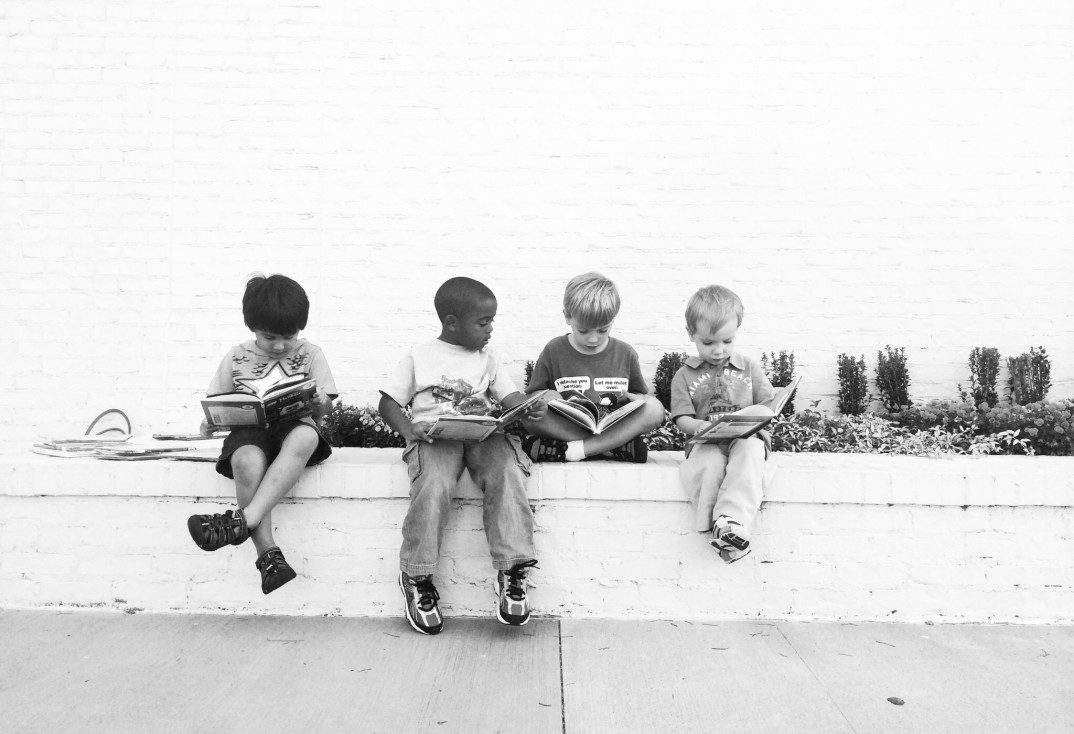I expect that some of you are feeling a little worn down, it has been a tough year. And so I want to try something a little lighter than usual, I want to talk about some of the philosophical lessons we can learn from great literature.
Of course, by great literature I mean great children’s books.
I should perhaps mention that the inspiration for this post is a passage in chapter four of G.K. Chesterton’s book Orthodoxy. There Chesterton notes, in passing, that many great ethical principles can be extracted from children’s fairy tales.
“But I deal here with what ethic and philosophy come from being fed on fairy tales. If I were describing them in detail I could note many noble and healthy principles that arise from them. There is the chivalrous lesson of “Jack the Giant Killer”; that giants should be killed because they are gigantic. It is a manly mutiny against pride as such. For the rebel is older than all the kingdoms, and the Jacobin has more tradition than the Jacobite. There is the lesson of “Cinderella,” which is the same as that of the Magnificat— EXALTAVIT HUMILES. There is the great lesson of “Beauty and the Beast”; that a thing must be loved BEFORE it is loveable. There is the terrible allegory of the “Sleeping Beauty,” which tells how the human creature was blessed with all birthday gifts, yet cursed with death; and how death also may perhaps be softened to a sleep.”
So let us extend this analysis, what are some philosophical lessons we can learn from great literature?
To make things more difficult, let’s also limit ourselves to non-obvious lessons. Obviously, we can learn from The Little Engine That Could about the value of optimism and hard work. And obviously we can learn Where the Wild Things Are lessons about emotional management and community. But those books are, at least in part, written to teach us those lessons. What I’m looking for are hidden lessons, insights deeper than the author’s own awareness.
For example, I don’t know if Crockett Johnson read much of Immanuel Kant’s Critique of Pure Reason when writing Harold and the Purple Crayon. But whether he had Kant in mind or not, I know of no story that so well captures the Kantian idea that the world we experience, even up to and including space and time, are a construction we create out of the order our minds to impose on the world.
Nor are the insights of that book limited to metaphysics. Consider the profound psychological insight revealed when Harold, after drawing up an apple tree bursting with fruit, frightens himself away from the good things he created by enlisting a frightening dragon to guard the tree. How often, I wonder, do we fence ourselves off from goods simply because we overreact to the fear that others may take something we think our own?
Or perhaps some of you are looking for a more political lesson to draw from the book. And so we reach the point of the book where Harold was looking for his own window. And since “he couldn’t think where it might be. He decided to ask a policeman.” But of course “the policeman pointed the way Harold was going anyway,” and so Harold learnt, even from a young age, the way that police power is employed to maintain the, even unjust, status quo.
But let us move on from Harold and the Purple Crayon.
There is the profound lesson of If You Give a Mouse a Cookie; that your reward for doing a good deed is not usually the relaxation of conscience, but rather the deepening of charity and so a dawning appreciation of the higher and harder acts of love still required of you. And then there are the prosaic lessons of Goodnight Moon. First on the value of attending to the commonplace goods of the everyday, and second the value of taking goodbyes and goodnights seriously, since you never know for certain that you will both wake again in the morning.
There are some obvious Aristotelian themes on temperance in The Very Hungry Caterpillar. (What with how unhealthful attempts to indulge appetite, rather than leading to relief, merely result in the appetites growing all the more persistent; and how he is only sated when he eats his proper food of a single leaf). But there are also deeply hidden philosophical nuggets. For instance, do you remember how the pages of that book grew with each passing day? You could see what foods were coming up, but not yet see their quantity nor read what the effects of indulgence would be. What a profound commentary on what happens to us when we try to pursue future goods. We see, at least somewhat, the good we are after. But we are insensitive to quantity, and rarely notice the unfortunate unintended consequences of the pursuit of the apparent good.
Of course, sometimes the philosophical lessons of children’s books are more abstract and less practical. Thus, in Chapter III of A.A. Milne’s Winnie-the-Pooh (entitled “In Which Pooh and Piglet Go Hunting and Nearly Catch a Woozle”) Pooh starts tracking what he thinks is a Woozle, only to find as he tracks that a second Woozle seems to have joined the first. Piglet joins the hunt, and before long yet another type of animal seems to have joined the pack they are tracking. Eventually Pooh realizes that he has “been Foolish and Deluded,” because of course it was his own tracks that he was chasing.
This is, of course, almost identical to the story that John Perry tells in his famous and rightly acclaimed “The Problem of the Essential Indexical”:
“I once followed a trail of sugar on a supermarket floor, pushing my cart down the aisle on one side of a tall counter and back the aisle on the other, seeking the shopper with the torn sack to tell him he was making a mess. With each trip around the counter, the trail became thicker. But I seemed unable to catch up. Finally it dawned on me. I was the shopper I was trying to catch.”
Perry might extract more philosophical insights about the essential indexical than our foolish and deluded Pooh does. But I’m still glad to know that our bear of very little brains came up with the raw material for the philosophical insight 53 years before Perry did.
I hope you’ve found these examples entertaining. There are dozens, maybe hundreds, more hidden philosophical lessons to be drawn from children’s books, but I’d rather hear the examples others come up with. Send me an email with your own favorite examples of hidden insights from great literature; I’ll eventually make a follow up post either here or at least on my personal blog.
But What Are We Doing Here?
Before I end this post, I just want to head off a certain potential skepticism. Some of you may doubt that it is the business of the ethicist to be extracting lessons from children’s books. Philosophers are trying to make great new ethical discoveries, seeing ethical truths others have missed! Why bother with the moral insights so humdrum as to trickle down to the tales we tell kids?
Well, perhaps there is sometimes a role for ethicists to find new ethical truths, identify unnoticed principles, or apply principles in original ways. But I don’t think that is what ethicists should usually be doing. Consider, for instance, this footnote in Immanuel Kant’s Critique of Practical Reason:
“A reviewer who wanted to say something censuring this work hit the mark better than he himself may have intended when he said that no new principle of morality is set forth in it but only a new formula. But who could even want to introduce a new principle of all morality and, as it were, first invent it? Just as if, before him, the world had been ignorant of what duty is or in thoroughgoing error about it.”
Kant’s point, and I think it is a good one, is that ethics is not like natural science at least in this one respect: ethical truth is something to which humanity has always had access just in virtue of being human. We do not need to discover ethics the way we discover that force equals mass times acceleration. Rather, we need to recognize and remember those ethical truths which, in a sense, we already knew. Thus, it is the job of the ethicist not to invent new principles, nor even discover unknown truths, but to give us new and clearer formulations of those principles which we somehow had already.



